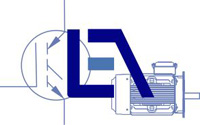Projecte and Publications
Project
"The Z-converter in systems of regenerative energy generation"
The present doctoral investigation focuses on the Z-Source Inverter (ZSI) and its application in distributed generation of electrical energy out of renewable sources. The range of low powers is especially considered as it is important for the energy supply in remote and rural regions. The ZSI is considered here as a feasible alternative to other well-known and proven concepts of power electronic systems for the energy conversion. The basic task for the power generation system is to harvest the available energy under the special conditions imposed by the renewable source. Depending on the water level, sunlight or wind conditions the voltage of the primary source has fluctuations and is not directly usable. Therefore, the power electronics has to convert the fluctuating voltage in an alternating voltage with constant amplitude and frequency. The ZSI seems to be especially suitable for this purpose as it allows an operation with variable input –as it is often the case in renewable sources- and constant output voltage. In addition, it offers an inherent robustness since a shoot through in the power bridge is not dangerous, it is rather part of the functional principle and allows the voltage boosting of the ZSI.
The research was concentrated to the water turbines in the power range P < 2kW as energy sources. As standard and widespread choice for the power electronics consist of a boost converter with a voltage source inverter. Nevertheless, it turns out that the ZSI can also satisfy the system demands and can cover a wide range of the speed -torque characteristics of the water turbine.
Due to the low power available in the investigated water turbine a single phase system was first considered. The single-phase ZSI was previously rarely treated in the literature, therefore a novel, suitable control scheme had to be designed in the context of work. The proposed control provides a linearization of the relationship between the length of the shoot-trough and the necessary boost to adjust the voltage gain. In a cascaded structure, the voltage gain (boost) and the output voltage are both regulated. The function of the proposed scheme was verified by measurements on a specially designed laboratory setup that confirmed the theoretical considerations.
In the course of the research, the three-phase ZSI was also investigated. The realization of common control and modulation techniques described in the literature, such as the maximum-boost-PWM for a three-phase ZSI led to cumbersome implementations and were discarded as not suitable. Therefore the application of the DPC (direct power control)-scheme that does not need a PWM is proposed as an appropriate alternative for three-phase systems connected to the grid and not in isolated operation. In this scheme the power injected to the grid is sampled at fixed intervals and for the next interval a suitable voltage space-phasor is selected so that the injected active and reactive power follows the desired values. A superimposed control loop maintains constant the DC−bus and the output voltage. This proposal was also tested on laboratory setup especially designed for the purpose of this investigation and showed a reliable operation. The measurements confirmed the theoretical considerations.
In low power generation for rural areas in addition to the robustness, the cost and the complexity of the system, the efficiency also plays a crucial role. Therefore, the efficiency of the ZSI was examined in this work. Through the use of SiC- MOSFET and the appropriate design of the chokes of the intermediate Z-circuit the efficiency could be significantly increased even in at partial load operation.
Compared to the classical solution consisting of a boost converter and an inverter, the ZSI exhibits a higher robustness due to the immunity against shoot-through failures in the inverter bridge. The conversion is performed in a single inverter and thus no separate control for boost and inverter units are required. Finally the control electronics is rather simple and can be implemented by using standard components yielding a reduced complexity of design and programming.
In the overall evaluation the ZSI seems to be a very suitable power electronics topology for systems of distributed power generation. Nevertheless the results of the present work show that the efficiency is not better than in the alternative topologies even if semiconductor switches of the newest generation. The shot-through actions in the half-bridges of the inverter that are necessary for the operation of the ZSI produce additional losses that have a negative impact on its efficiency and reduce the suitability of the ZSI for such purposes.
Publications
2016
M.Steinbring and M.Pacas2014
Steinbring, Manuel; Pacas, MarioIncreasing the Efficiency of a Single Phase Z-Source Inverter by utilizing SiC - MOSFETS, International Exhibition and Conference for Power Electronics, Intelligent Motion, Renewable Energy and Energy Management; Proceedings of PCIM Europe 2014, pp.1,7, 20-22 May 2014
Steinbring, Manuel; Pacas, Mario
Resonant circuit for the reduction of the power pulsation in the DC-link of a single phase ZSI, Industrial Electronics Society, IECON 2014 - 40th Annual Conference of the IEEE , pp.1747,1753, Oct. 29 2014 - Nov. 1 2014
2012
Steinbring, Manuel; Pacas, Mario; Alnajjar, Mohamme
Emulation of a micro-hydro-turbine for stand-alone power plants with Z-Source inverter, IECON 2012 - 38th Annual Conference on IEEE Industrial Electronics Society, pp.5291-5296, 25-28 Oct. 2012
Steinbring, Manuel; Pacas, Mario
Modified control ctructure for single phase z-source inverter and efficiency analysis, PCIM 2012
